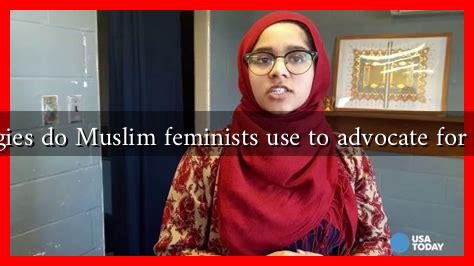-
Table of Contents
What Strategies Do Muslim Feminists Use to Advocate for Hijab Rights?
The hijab, a traditional headscarf worn by many Muslim women, has become a focal point in discussions about women’s rights, religious freedom, and cultural identity. While some view the hijab as a symbol of oppression, many Muslim feminists advocate for hijab rights as a matter of personal choice and empowerment. This article explores the strategies employed by Muslim feminists to advocate for hijab rights, highlighting their efforts to challenge stereotypes, promote education, and foster community support.
Understanding the Context
Before delving into the strategies, it is essential to understand the context surrounding hijab rights. In many Western countries, the hijab has been subjected to scrutiny and discrimination, often associated with extremism or backwardness. This has led to policies that restrict its use in public spaces, such as schools and workplaces. In contrast, Muslim feminists argue that the hijab can be a source of empowerment and a means of expressing one’s identity.
Strategies Employed by Muslim Feminists
Muslim feminists utilize a variety of strategies to advocate for hijab rights, including:
- Public Awareness Campaigns: Many Muslim feminists engage in public awareness campaigns to educate the broader community about the significance of the hijab. These campaigns often include social media initiatives, workshops, and community events that aim to dispel myths and stereotypes surrounding the hijab.
- Legal Advocacy: Some Muslim feminists work with legal organizations to challenge discriminatory laws and policies. For instance, in France, where a ban on hijabs in public schools was enacted, activists have fought legal battles to protect the rights of Muslim students.
- Personal Narratives: Sharing personal stories is a powerful tool for Muslim feminists. By highlighting their experiences with the hijab, they humanize the issue and provide insight into the diverse reasons women choose to wear it. This approach fosters empathy and understanding among non-Muslims.
- Building Alliances: Muslim feminists often collaborate with other marginalized groups to create a united front against discrimination. By forming coalitions with secular feminists, LGBTQ+ activists, and racial justice organizations, they amplify their voices and broaden their reach.
- Educational Initiatives: Many Muslim feminists focus on education as a means of empowerment. They organize workshops and seminars that teach young Muslim women about their rights and the significance of the hijab, encouraging them to make informed choices.
Case Studies and Examples
Several notable examples illustrate the effectiveness of these strategies:
- The Hijab Project: This initiative, launched by Muslim women in the United States, aims to share stories and experiences related to wearing the hijab. Through social media platforms, participants post photos and narratives that challenge stereotypes and promote understanding.
- Legal Challenges in Europe: In 2017, the European Court of Justice ruled that companies could ban employees from wearing visible religious symbols, including hijabs. In response, various Muslim feminist organizations mobilized to challenge this ruling, arguing that it infringes on individual rights and freedoms.
- Community Support Groups: Organizations like the Muslim Women’s Network UK provide resources and support for women facing discrimination due to their hijab. These groups offer legal advice, counseling, and community-building activities that empower women to stand up for their rights.
Statistics and Impact
Research indicates that a significant number of Muslim women choose to wear the hijab as an expression of their faith and identity. According to a 2019 Pew Research Center survey, approximately 62% of Muslim women in the U.S. reported wearing the hijab, with many stating it enhances their sense of belonging and self-esteem. This data underscores the importance of advocating for hijab rights as a matter of personal choice.
Conclusion
Muslim feminists play a crucial role in advocating for hijab rights, employing a range of strategies that challenge stereotypes, promote education, and foster community support. By raising awareness, engaging in legal advocacy, sharing personal narratives, building alliances, and focusing on education, they work tirelessly to ensure that the hijab is recognized as a symbol of empowerment rather than oppression. As discussions around women’s rights and religious freedom continue to evolve, the voices of Muslim feminists will remain vital in shaping a more inclusive and understanding society.
For further reading on this topic, you can explore resources from organizations like Muslim Women’s Network UK and Pew Research Center.

